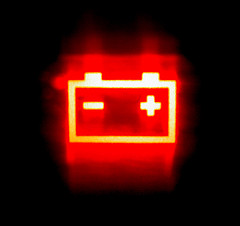At first, hybrid vehicles touted their freedom from electric cords. Now it appears that the electric cord might be the salvation of hybrids, a vehicle type that might need a new wrinkle to continue its upward climb. When the Honda Insight and Toyota Prius hybrid gasoline-electric vehicles were first introduced to the US market, their manufacturers were quick to point out that they never had to be plugged in. Since the plug-in General Motors EV-1 was considered by GM to be a dismal failure in the marketplace, the fact that the Prius and Insight never had to be connected to a receptacle was seen as a major plus. And now large-format lithium-ion rechargeable batteries could make feasible the “plug-in” hybrid electric vehicle, which has become the new darling of the environmental set, although none are on the road in volume production. But several manufacturers, including Ford, Toyota, and General Motors, say they want to change that.

flic.kr/p/hNcMN
Battery is key
The battery in a plug-in hybrid vehicle produces much more energy than batteries traditionally used in hybrid vehicles. That means it allows people to enjoy significant amounts of zero-emission driving. This answers one of the unasked questions about current hybrids, which still use fossil fuel and still emit quantities of internal combustion engine exhaust and so-called “greenhouse gases.” In contrast, plug-in hybrids offer much longer periods of no-emission driving. Plus, in short trips, they might not burn any gas at all. The use of the more efficient, high storage capacity battery also results in phenomenal fuel economy. Fuel efficiency that can reach up to 180 miles per gallon for an average commute of 50-60 miles per day, which is about triple the claims for a conventional Prius.
Because of the fuel economy, the plug-in hybrid also offers quieter driving and incredible range, which means fewer trips to the gas station. Using the plug-in system, the plug-in hybrid electric vehicle (PHEV) offers a zero-emission electric mode in city and suburban traffic (up to speeds of 33 mph) and an efficient gasoline engine for long, higher speed trips. It allows renewable energy to displace gasoline, reducing our reliance on archaic fossil fuels, which is increasingly important given today’s environment and economic concerns. Of course, a significant percentage of electricity that could be used to recharge the vehicle is currently being generated using fossil fuels, but some very smart people argue that it will be easier to convert generating plants to renewable fuels than the automobile fleet.
Where can you get one?
Used hybrid cars are right here (;)
So why don’t we see them on the road today? The answer, ironically, is the high-tech battery design itself. Lithium-ion batteries have substantially higher energy density than competing batteries for hybrid electric vehicles, but they are also currently very expensive. The battery packs can add several thousand dollars to the price of a typical hybrid vehicle, which already is premium-priced. Ford, GM and Toyota say they hope to overcome the price concerns for hybrids, and Toyota’s most recent announcement on its upcoming plug-in says it won’t use the higher-cost lithium ion batteries. As the situation continues to develop, we will continue to cover it here, and let you know the options.
—Driving Today Contributing Editor Luigi Fraschini, who is based in Cleveland, has long been a fanboy of alternative-fuel technology. © Studio One Networks.
Tagged with: Ford • General Motors • hybrid • Toyota
Filed under: Save Gas & Earth